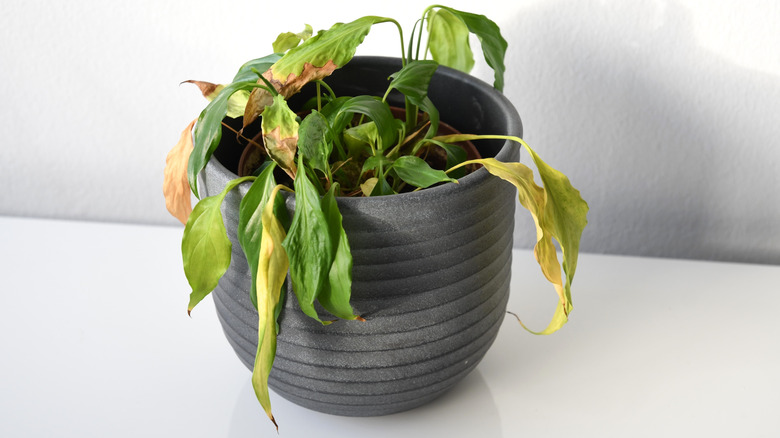Keep Potted Plants From Drying Out With A Budget-Friendly Solution You Can DIY
When it comes to caring for potted plants, it's easy to forget to water them. Before you know it, another houseplant bites the dust. If you have trouble remembering to water your plants, try using old sponges to help you keep your plants from drying out– all while helping the environment, too. People in the United States throw away 500 million sponges every year. That's a lot of sponges in the landfill! When those sponges do finally break down, they also release methane – which isn't great for our atmosphere, either. Instead of tossing those old kitchen sponges into the trash, think about reusing them in your houseplant pots to help regulate moisture and keep them happy and healthy.
As any container gardener knows, it's not easy caring for potted flowers. They all need sunlight, good drainage, and just the right amount of water. Sponges might help. If you tend to underwater plants, they may retain water and keep the planter from drying out. If you have a tendency to overwater, sponges could absorb excess water at the bottom of the planter, too.
Sponges, like cut-up pool noodles, can possibly be an inexpensive way to fill oversized planters, as well. If used at the bottom of oversized planters, they may make them lighter and easier to move around. To use sponges to help regulate moisture and help fill out the planter, then all you'll need are some used sponges, scissors, soil, a pot, and your plant.
Add sponges to your potted plant like this
If you want to try this hack, grab your kitchen sponge or sponges. Make sure to wash them thoroughly first and then set them aside to completely dry. While some bacteria can be beneficial to plants, other kinds can cause disease and dish soap residue can cause its own issues. Once your sponges are completely dry, then you'll be ready to use them. If yours happen to have a hard scrubbing side, cut or peel it off first. You can cut the sponge into 1-inch chunks or even just toss a whole sponge into the base of the empty planter.
Always make sure the planter has a hole for drainage. Good drainage is essential when learning how to care for indoor foliage plants. Then, add in soil and your plant. Water as directed, keeping in mind that some potted plants need more or less water than others. It's a good rule of thumb to check the soil to see if it's dry before watering. Not all your potted plants will need to be watered at the same time. Also, potted plants that are kept outdoors will need more water the hotter it gets.
Keep an eye on your plants and if they begin to wilt or start to look puny even after trying the sponge trick, grab a little bit of hydrogen peroxide. It's the medicine cabinet staple that can help keep houseplants thriving. This can help ward off root rot or prevent harmful bacteria from growing in the soil.
